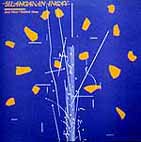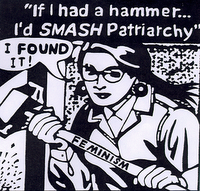
Of all cinema's illustrious martyr figures, none is more romantic than Jean Vigo, poet maudit of '30s French cinema, dead at 29 after a long struggle with tuberculosis, leaving a filmography that can be screened in just over three hours and which, during his lifetime, showed every sign of vanishing into oblivion. But the ethereal beauty and earthy anarchism that permeate his two masterpieces
Zero de conduite (1933) and
L'Atalante (1934) are still enveloping audiences in their hypnotic atmosphere today and leaving them sure in the knowledge that Vigo was more than a filmmaker - he was a moment in film history that will never be repeated.
Already entertaining cinematic ambitions, Vigo was briefly employed by the Franco Film studio as a camera assistant. A gift from his father-in-law allowed the destitute filmmaker to purchase a second-hand camera and begin work on what would become his first movie, the satirical film essay A propos de Nice (1930). It was around this time he met his close collaborator Boris Kaufman, a Russian cinematographer. The brother of both cameraman Mikhail Kaufman and director Dziga Vertov (real name Denis Kaufman), whose masterpiece Man with a Movie Camera (1928) influenced A propos de Nice, Boris Kaufman later enjoyed a distinguished career in Hollywood, shooting On the Waterfront (1954) for Kazan and several of Lumet's early films.
A propos de Nice constructs around the central motif of the carnival a savage, frenetic vision of a superficial society in a state of putrefaction. As bold in its formal experimentation as it is in its gleefully morbid fascination with ugliness, the grotesque humour of its portraits of the holidaymakers that swarm over the Promenade des Anglais (sometimes suggestively intercut with shots of animals!) is brutally undercut by images of distressing poverty. The uneasy atmosphere of indolence and boredom boiling over into lustful frenzy while willfully ignoring the encroaching sense of death and decay that surround it makes this Vigo's darkest film. While Zero de conduite's satire is balanced with a lyrical celebration of the forces of revolution and renewal, A propos de Nice limits itself to the death dance of caricatures, caricatures all the more startling for being stolen from life with a hidden camera. As Vigo stated in an address to the Groupement des Spectateurs d'Avant-Garde, "In this film, by showing certain basic aspects of a city, a way of life is put on trial.the last gasps of a society so lost in its escapism that it sickens you and makes you sympathetic to a revolutionary solution."
holidaymakers that swarm over the Promenade des Anglais (sometimes suggestively intercut with shots of animals!) is brutally undercut by images of distressing poverty. The uneasy atmosphere of indolence and boredom boiling over into lustful frenzy while willfully ignoring the encroaching sense of death and decay that surround it makes this Vigo's darkest film. While Zero de conduite's satire is balanced with a lyrical celebration of the forces of revolution and renewal, A propos de Nice limits itself to the death dance of caricatures, caricatures all the more startling for being stolen from life with a hidden camera. As Vigo stated in an address to the Groupement des Spectateurs d'Avant-Garde, "In this film, by showing certain basic aspects of a city, a way of life is put on trial.the last gasps of a society so lost in its escapism that it sickens you and makes you sympathetic to a revolutionary solution."
What is already present in A propos de Nice is Vigo's ability to capture the natural beauty of a real, non-studio setting and spontaneously elaborate on the impression, transforming the commonplace into the magical. His eye for atmosphere and detail would grow from film to film, but from the outset it was rooted in a documentary practice that simultaneously transcended the documentary.
A whole movie in split-rar lies
here in a "_Movies_" folder. (~250Mb).































